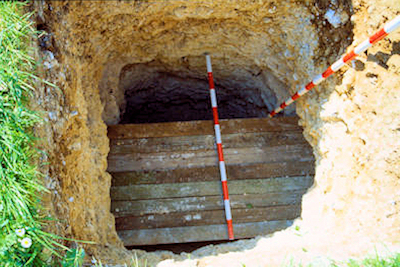

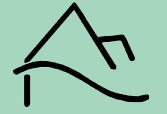
Provision of a Geophysics Test Bed
This project was initiated by Peter Reynolds prior to his death and completed by Steve Dyer of Surrey University and later part of the Butser Ancient Farm management team after 2007.
Work was begun late in 1999, following discussions with Surrey University, Portsmouth University and other interested parties. After completion of the features, the site was surface ploughed to restore it and grass / other flora have colonised it, masking the signs of the original construction.
The purpose of the test bed was to provide a well-
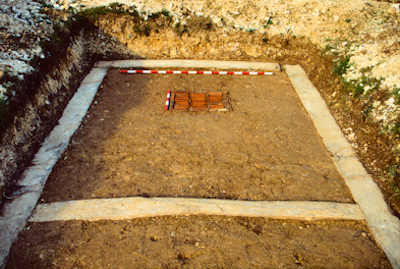
A variety of constructs and materials were included. Linear features of different depths, widths, orientations and both with and without wall foundations were built. The wall foundations are of brick or flint. There is a "floor" level, various pits and voids, and two ditch systems with variations in construction details along their lengths. The site was completed during 2003. 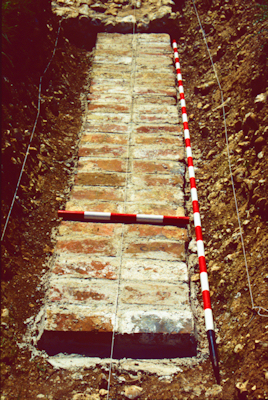
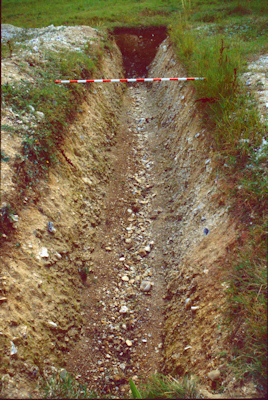
The reason for the construction of the test bed was the hypothesis formed by Peter Reynolds that the response and accuracy of data obtained by geophysical surveys varied with soil moisture conditions. He intended to make a survey of the area at regular intervals over a period of several years and relate the results to weather records, in particular rainfall, from the Butser weather station.
Steve Dyer undertook surveys with a resistivity meter every four weeks from 2004 until his death in 2013.
